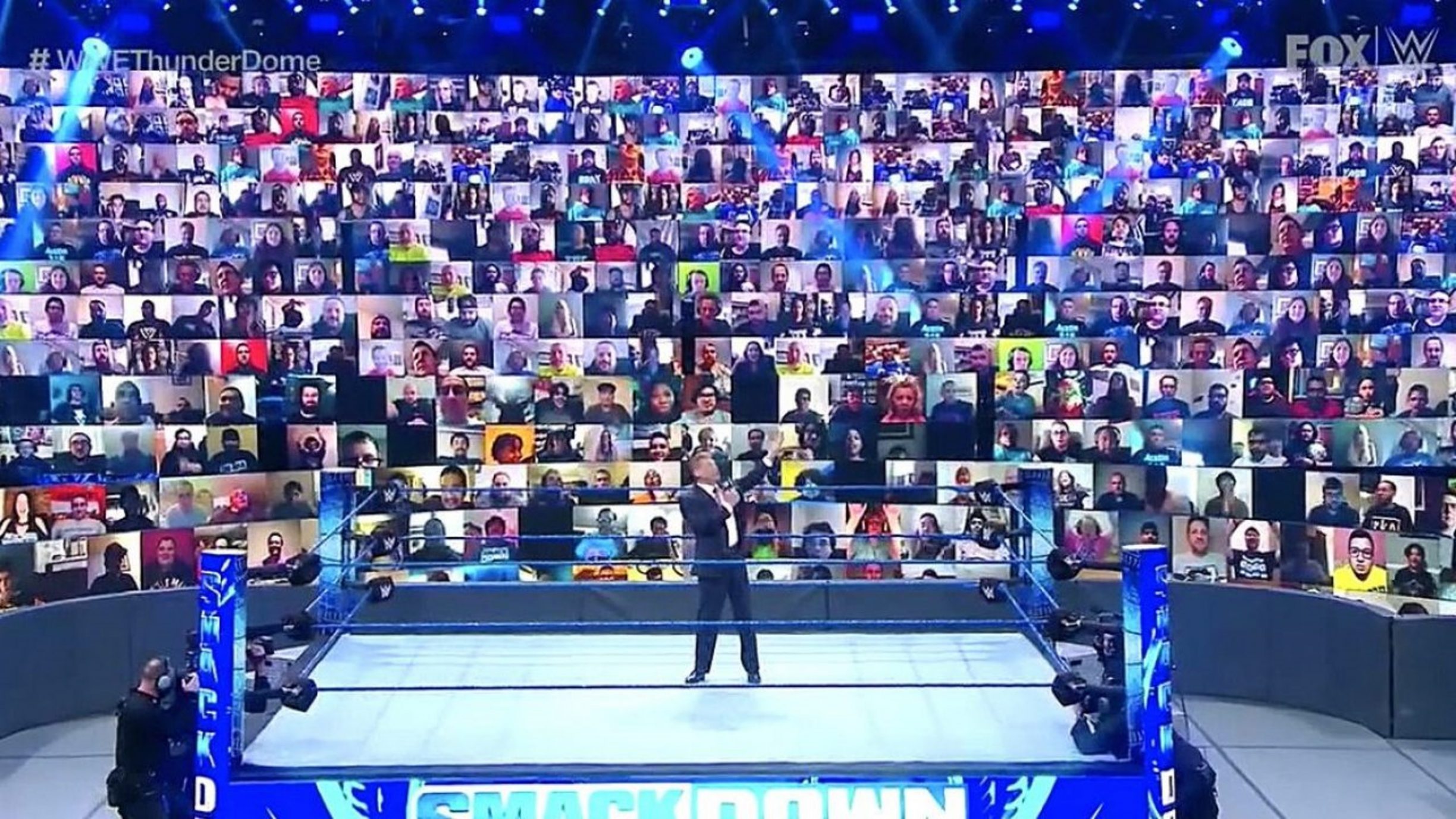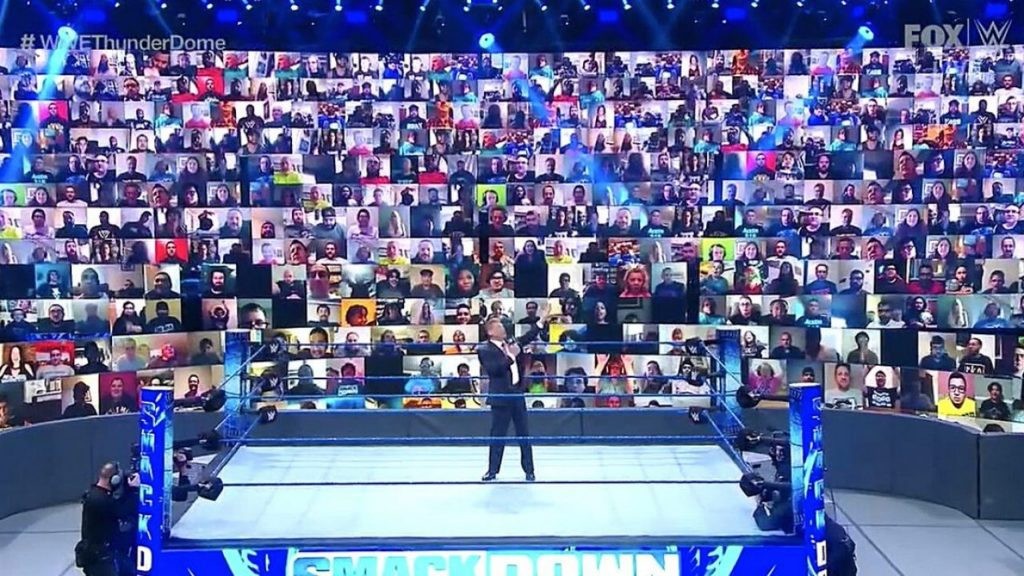Esports: Competing for Screen Time
By Kirsten Nelson


How Esports Led the Way to Virtual Audiences for Live Sports
A few years ago, the whole idea of Esports presented a fascinating blend of curiosity, excitement and consternation. Why would people want to watch other people play video games on screens? And how exactly are they connecting all these remote players around the world? Well, the kids sure seem to like it. I guess this is the future of athletics.
Cut to the present and Esports is a clear winner in creating a connected spectator experience — even on screens, and even across distance.
Deemed a market to watch by sheer growth potential, as new stadiums break ground and countless schools invest in programs, Esports also has a lot to teach anyone looking to increase fan engagement. With a blend of real-time remote audience participation, social media tie-ins and a new way of creating drama purely on video screens, these are athletic contests designed to attract crowds, even among those who rarely look up from their phones.
These event productions also present refreshing new ideas beyond athletics. After all, who doesn’t want to grow audiences and create memorable moments with fully immersive multimedia shows? It’s fun for everyone. Even CEOs who are trying to go viral with a product announcement.
But it’s not just the spectacle that is providing teachable moments in Esports. In fact it was the entire mentality and process behind the scenes that would turn out to provide the most benefit when the world went into pandemic lockdown in March 2020.
Esports breaks with established athletic tradition in one additional way — it’s iterative, just like all those mega tech companies that have “disrupted” everything else in life. These are event productions that move as quickly as their athletes.
“Esports is experimenting every year, every month, every season of their play,” observed Eric Gazzillo, Director of Innovation with Quince Imaging, an event production, broadcast and all-around immersive media specialist that has built a solid reputation not just in Esports but also in creating those mind-blowing on-court and on-ice projection mapping and AR spectacles that are all over the internet.
Things have always moved fast in Esports, Gazzillo elaborated, “They know they have a young, tech-savvy audience, and they have a huge international community. So they rely heavily on creating unique productions remotely.”
And Esports was doing that for years before Covid-19 hit, which certainly helped when everything had to go virtual. So it’s probably no surprise that other major sports franchises quickly turned to the Esports model when they were suddenly dealing with empty stadiums.
Esports served a virtual audience from the start. While multitudes of gamers played across networks, competing with teams in the same venue or on the other side of the world, the inherently interactive video-centric setup gave live audiences and remote fans plenty of ways to engage.
This provided plenty of creative fodder when traditional sports leagues suddenly had to create excitement with remote fans. The challenge was how to connect live-action athletics with an audience appearing on video screens.
In the face of rapid shutdowns in March 2020, one of the earliest experiments in connecting traditional athletes with virtual audiences was actually comparatively non-athletic. It was the NFL Draft slated for April 2020. With a brief to make a show that delivered the excitement of the NFL Draft in a spectator-less void, Quince Imaging, together with its production partners at The Famous Group, were deep into R&D during the first weeks of the lockdown.
The experiment worked, delivering a widely watched event, and that was the beginning of Virtual Seat, the remote experience platform offered by Quince and The Famous Group. In the past year, Virtual Seat has brought that live audience feeling to games, matches, productions and events for mega clients like the NFL, NBA, WWE, Blizzard, ITV and lots of top-level corporations.
Just like the world of Esports, development of Virtual Seat was fast and iterative, scaling rapidly into a product that delivers 1,000 live participants into a feed at any one time. Not just their video images, but their audio inputs, too.
Just to elaborate, this isn’t a streaming situation, where video is sent out to countless audience members. This is a full I/O setup with a virtual audience, using Dante Virtual Soundcard (DVS) to give production teams the ability to mix in spectator audio to make a show that fits their needs.
“We have the ability to mix down the entire audience — so you can have a thousand folks mixed down, something no other platform can do,” Gazzillo said. And they can also select out 15 solo mix minuses for individual control.
The flexibility is key, according to Liam O’Hanlon, Video Systems Engineer with Quince. Particularly as the remote audience keeps growing, along with the need to bring in remote hosts and guests from all over the world. When both the crowd and the talent are remote, it’s a lot. “Now we’re dealing with so much more, even on a traditional show,” he said. “You have all these mix/minuses that you’re dealing with that you didn’t previously have to. What used to be a pair of XLR cables and no big deal, now it’s a dozen feeds or more. Which is why it’s just so much easier to just have everything on Dante.”
And of course that’s all fully virtualized via Dante, which has been a huge help from an operations standpoint. “One of the ways we’ve been able to get thousands of fans in a room is by relying heavily on virtualized environments, using virtual instances of Windows to be able to scale our on-site I/O as we scale our cloud ingest” Gazzillo explained. “And when you have a virtual device you lose so much hardware connectivity. But Dante allows us to actually get the I/O we need on these discrete virtual machines.”
Even better, the setup has those two key features everyone’s looking for now: flexibility and scalability. Which is a good thing, because virtual audiences are just getting bigger, and they’ll be a big part of revenue generation from here onward.
“There’s been so much more audience and fan interaction now, it’s going to be hard to take it away from fans and audiences,” Gazzillo said. “What is interesting post-Covid is that it’s a different kind of scale. When you think about Dante’s professional products for live events, we went from trying to fill one big room with audio, video and lighting systems to now, when we’re talking about connecting a lot of people, places and devices. I mean, it’s a no brainer, whether it’s Esports or virtual audience, it’s the same solution, and we’re connecting a lot more pieces.”
So get ready to expand your fanbase, this technology is drawing a crowd.
Stay up to date with the Dante Journal
* indicates required fields




